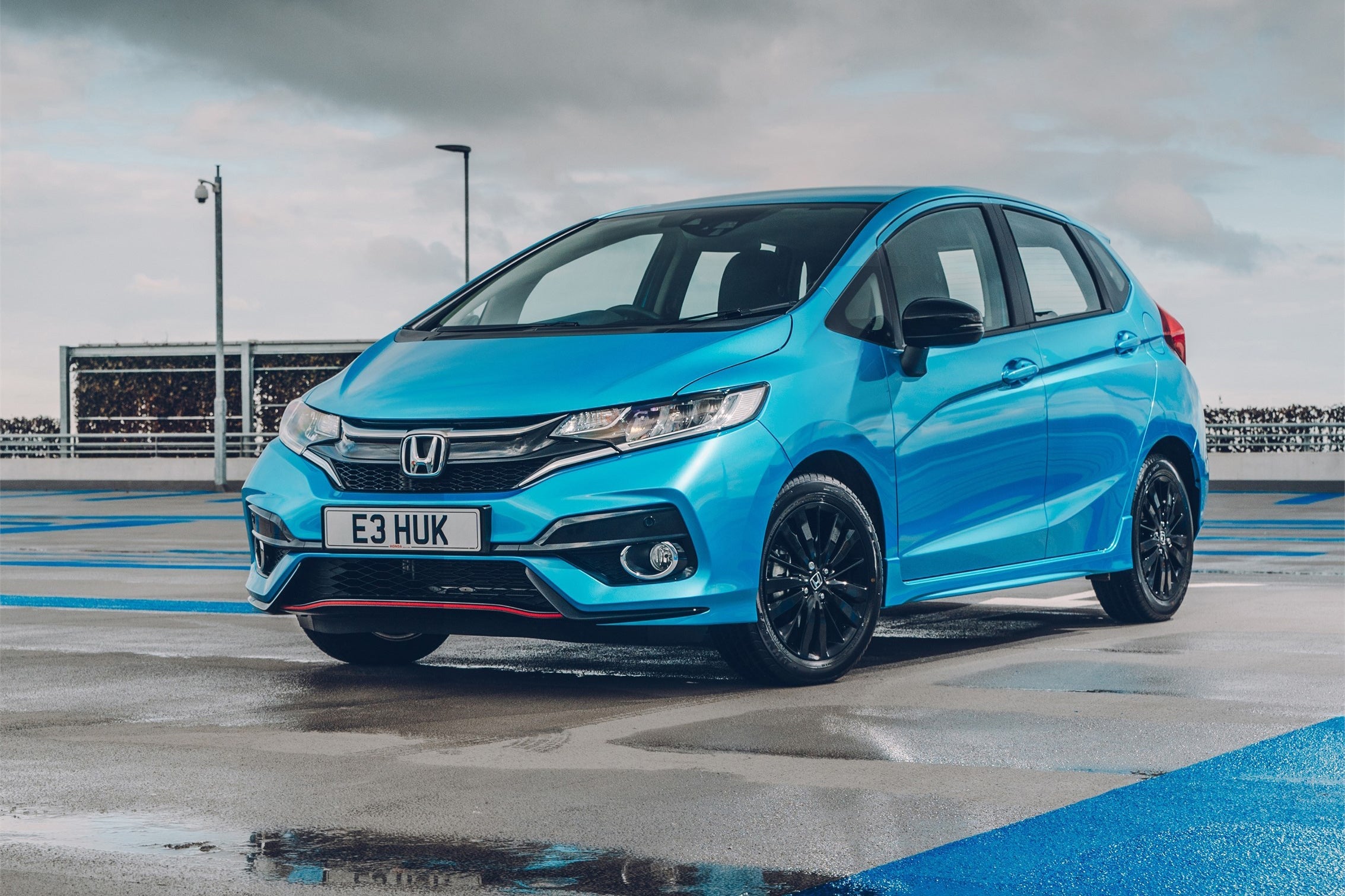Honda Jazz (2015-2020) Review
Written by Andrew Brady
Quick overview
Pros
- Unrivalled interior versatility
- Should prove extremely reliable
- Very easy to drive in town
Cons
- Dated infotainment options
- Limited engine range
- Noisy CVT automatic gearbox
Overall verdict on the Honda Jazz
"In this Honda Jazz review we are looking at something of an outlier in the supermini segment. Rather than going big on eye-catching looks, a premium interior or zippy driving experience, the Jazz sticks to what it has always offered - barely believable amounts of space and near-bulletproof reliability. You'll know already which of these attributes suit your needs, and if it's the latter then the Honda Jazz is pretty much unbeatable."
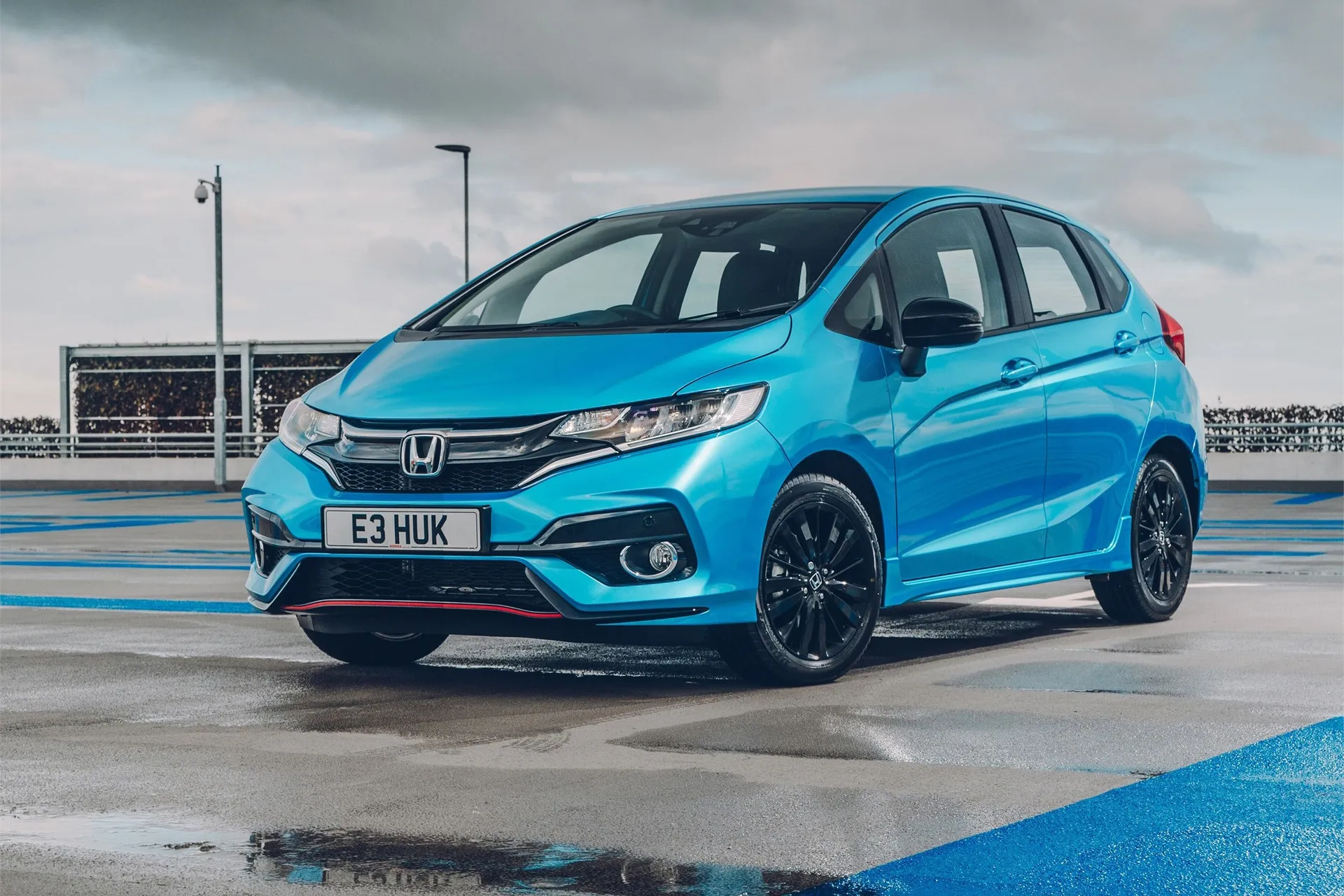
The Honda Jazz is a small family car that is famed for its brilliantly practical interior and its reliability. So while it’s priced to compete with small hatch like the Volkswagen Polo and Ford Fiesta, it's cut from different cloth.
With an upright grille, tall side windows, and extra large details like the front and rear lights, it looks more like a shrunken people carrier than a cutesy family car, but the boxy dimensions translate to a very spacious cabin. For carrying passengers or luggage, it's more versatile than any of the competition, thanks to clever design.
Honda calls the rear seats 'Magic Seats' and it's true they do have a number of impressive tricks up their sleeve. If you need to carry something tall, you can flip the bases up and lock them in place, a brilliant way to carry for example, a wheelchair or large potted plant. For bulkier items like furniture, they fold into the floor, leaving a flat loading bay that'll swallow more luggage than many crossover SUVs, and you can fit a surfboard in too.
Buyers have the choice between two petrols, a rather sluggish 1.3-litre with just over 100PS, and a quicker, more flexible 1.5-litre with 130PS. The standard car is fine on short journeys in town, but struggles on flowing A-roads and motorways, where its lack of oomph is badly exposed as it tries to keep up with faster traffic.
The quicker one isn't much more flexible, delivering its strongest performance at very high revs, and for punchier, refined motorway progress you'll be a lot better off with a turbocharged motor from one of its small car rivals. Many also better its distinctly average fuel economy, although at over 50mpg it'll hardly cost the earth to run.
As standard the 1.3-litre comes with a choice between a six-speed manual gearbox or what is known as a continuously variable automatic transmission (CVT). The manual is a joy to use, with a positive shift action, light clutch and closely stacked ratios, but the automatic hampers performance and is noisy when pushed.
Stay away from the motorway, and the Honda Jazz offers up an uncomplicated driving experience. It rides nicely, grips well, and doesn't lean too much in the corners, with light steering and great all-round visibility. It feels safe and predictable, but fidgets on uneven roads, and won't shine on challenging ones like a Ford Fiesta.
It's a little more expensive than its peers, but the equipment list is rather sparse on entry-level models. The mid-spec SE trim benefits from decent safety equipment, but the infotainment feels outdated and is missing key features, such as Android Auto and Apple CarPlay smartphone connectivity, and built-in navigation too.
The cabin is hardwearing and built to last, with nicely damped switches and a straightforward layout, but the hard plastics and fiddly dimly-lit touchscreen mean that newer small cars feel more upmarket and modern. If you are looking for a hassle-free small car with terrific practicality the Jazz is perfect, but it's no all-rounder.
If you're looking for the newer version, you need our Honda Jazz review.
Is the Honda Jazz right for you?
The Honda Jazz has been playing the same simple tune for years now. It gives you all the benefits of a supermini (reasonable running costs, dinky dimensions and ease of use) with the interior space of a much bigger car.
Traditionally it's been very popular among retirees, but we think anyone in the market for a hassle-free small car will appreciate its many clever practical touches, flexible boot, and robust interior that feels built to last.
It's a sensible choice, and those after style and flair should look elsewhere. Similarly, its limited engine range means buyers seeking ultra-low running costs, hybrid technology, or better motorway performance are better off choosing a more conventional small car such as the Skoda Fabia, which also has better media hardware.
Still, if you need a car just for nipping to the shops and short local journeys, the Honda is safe, good to drive, and should provide a totally hassle free ownership experience - not something that all of its rivals can claim.
What’s the best Honda Jazz model/engine to choose?
Most buyers will be well served by the 1.3-litre engine. Its lack of puff means it is ill-suited to motorways trips, but it's a lot more affordable than the 1.5-litre model, and works fine when buzzing around suburban streets.
Paired with the standard six-speed manual gearbox, the Jazz is enjoyable to drive, despite its leisurely pace. The CVT automatic is an acquired taste, taking the stress out of stop-start traffic and low-speed manoeuvres, but spoiling refinement and denting performance on faster open roads, exacerbating the Honda's other flaws.
Avoid the 'S' model if you can. It's too basic to be comfortable, missing out on the touchscreen media system and improved safety equipment that are standard on the higher grades. SE models offer the best value, but if you can plump for the Honda Jazz EX, you'll appreciate having a leather steering wheel, climate controls and LED lights.
What other cars are similar to the Honda Jazz?
The Jazz offers something genuinely different from the usual small car suspects. Its roomy interior provides a level of passenger space that would embarrass some executive saloons, and the boot is both big and clever.
If you want decent practicality but a more conventional shape, the Skoda Fabia comes closest to matching it. With the Honda Jazz's 330-litre boot it can carry a decent amount of luggage, and has a punchy three-cylinder turbo engine.
For buyers who fell in love with the Honda's tall driving position and airy cabin, plenty of crossover SUVs give a similar sensation from behind the wheel. The Citroen C3 Aircross and Nissan Juke are two prime examples and come loaded with kit across the range. The Juke is best for cabin quality, the Citroen for spaciousness.
The best driving small car is the Ford Fiesta, but the strongest all-rounder is probably the Volkswagen Polo. Unlike the Jazz, both of these feel mature and refined on the motorway, so are perfect for longer journeys.
Comfort and design: Honda Jazz interior
"Simplicity is the order of the day inside the Honda Jazz. The layout is as straightforward as a German accountant. It places all the major controls high up the cabin and within easy reach of the driver, and they're oversized too."
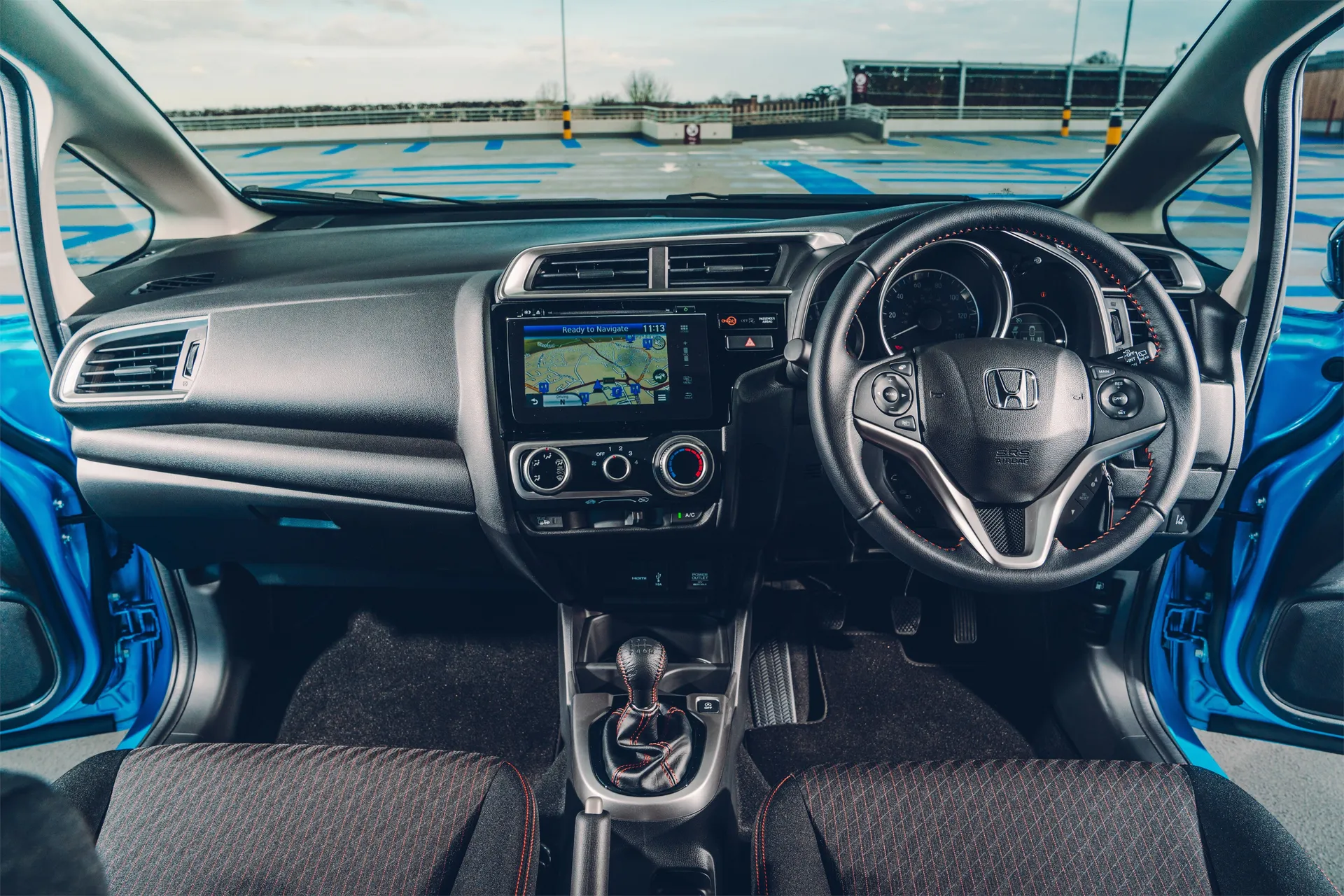
That makes them clear to read and hassle-free to operate, and we especially like the chunky manual air-con controls. Ironically, the physical buttons in the most basic Honda Jazz S model are effortless to use while driving, while it can be fiddly to change the temperature (or see the display) in the touchscreen equipped SE and EX grades.
The driving position is good, with a high-set seat and tall windows giving a superb view out in all directions. If you're a taller driver, you may wish the seat slid a bit further back to let you stretch your legs out, but at least headroom is no issue. All cars come with a height-adjustable drivers seat; it's comfortable and nicely padded.
Only the priciest versions give your passenger the ability to move the seat up and down though, and there is no lumbar support or seat heating to be found, even on the options list, so you'll be chilly on winter mornings.
Honda's no frills approach means it takes only a few moments to acclimatise and find everything in the Jazz, and the only stain on its copybook is the cupholder near the wheel blocking the air vent. In all other respects, it's an intuitive driving environment that places everyday usability well ahead of any concerns about design.
Quality and finish
The Jazz is priced above many of its peers, but that money hasn't been spent on a lavish interior. The dash materials feel as though they've been chosen for durability rather than creating a plush, welcoming cabin.
It's certainly not bargain basement, with a mix of textures and finishes that includes gloss black surrounds on the stereo, and matte grey inserts around the air vents and underside of the steering wheel. Still, run a hand over the glovebox lid or door bins, and you're met with some fairly low-rent surfaces that are clearly cheap.
Everything is plastic (including the steering wheel on all but EX models) and despite some silver trim pieces designed to look more like metal, no one is going to be fooled. There's no dense or squidgy dash covering, and while we can't fault the build quality, a Renault Clio, Volkswagen Polo and Peugeot 208 are all more upmarket.
Spending extra on the top Honda Jazz EX trim does bring a noticeable lift, with better seat fabrics, stitched leather for the steering wheel and gear knob, and a glossy black touch panel for the climate controls brightening things up.
Infotainment: Touchscreen, USB, nav and stereo in the Honda Jazz
The entry-level Jazz has a radio that is embarrassingly basic. It has four speakers, a small LCD screen with graphics that look like they're from a nineties arcade game, a CD player, and Bluetooth, but that's your lot.
If you want DAB radio, USB connectivity, or a touchscreen then you need to step up to the SE model. It has a 7.0-inch colour screen that includes Honda's Connect media system, and can be upgraded with sat-nav.
No Jazz comes with Android Auto or Apple CarPlay smartphone integration - a major omission at this price.
This system is certainly better than the standard setup, but lags behind the slick touchscreen you get in cars such as the Volkswagen Polo and Skoda Fabia for legibility and touch response. The touch sensitive buttons next to the screen are particularly irksome, sometimes requiring several careful prods before they register an input.
Although sat-nav is offered as an option on both Honda Jazz SE and EX trims, it’s a pricey £610 extra for an aftermarket system that feels seriously outdated compared to the standard setups of rivals. Entering addresses is tricky and the on-screen route guidance is confusing, so it's annoying that it won't let you use your phone instead.
Space and practicality: Honda Jazz boot space
Whether you're lugging a haul of fresh greenery from the local garden centre, strapping kids into child seats or need to carry tall adults without crushing their knees, few small cars do it better than the spacious Jazz.
Everything has been designed to maximise the amount of room. It's no longer than other superminis, but the gap between the front and rear wheels is huge, so passenger space is class-leading, in the front or the back.
The tall roof means there is loads of headroom, and you won't rub shoulders with the person sat next to you.
You can comfortably fit three adults across the rear row, and although they'll be brushing their elbows, the flat foot-wells mean that whoever sits in the middle doesn't have to awkwardly straddle a raised hump in the floor. Its doors open really wide, giving great access to the back seats for fitting a child seat. You can fit a Group 1/2/3 or iSize rear-facing child seat in the outer chairs without restricting the knee room for your front passenger.
Carrying luggage is no chore either, with the Honda Jazz's 354-litre boot that's only beaten by the Renault Clio. However the Honda's clever packaging means it can carry a class-leading 1314 litres with its seats folded. The back seats fold into the floor, leaving a very low, perfectly flat loading area that has a van-like capacity.
It has the added bonus of a set of flexible rear seat bases that flip up (cinema style) for transporting awkward items like potted plants. There are more tricks too, as you can recline the backrest of the front seat to lie flat. Honda calls this 'Long Mode' but it means you can carry items that are 2.4m in length, like a big bookcase.
On board stowage is generous too, with decent door pockets, three cupholders (one of which is right up by the steering wheel), a handy storage bin under the centre armrest and a roomy glovebox for valuables.
The Honda Jazz's dimensions are 3995mm length, 1980mm width and 1550mm height.
Handling and ride quality: What is the Honda Jazz like to drive?
"Above all else, the Jazz is an easy, simple car to drive. The controls are light, but consistently weighted, and the visibility is great, so it's no hassle to judge the exterior dimensions and manoeuvre it with real confidence."
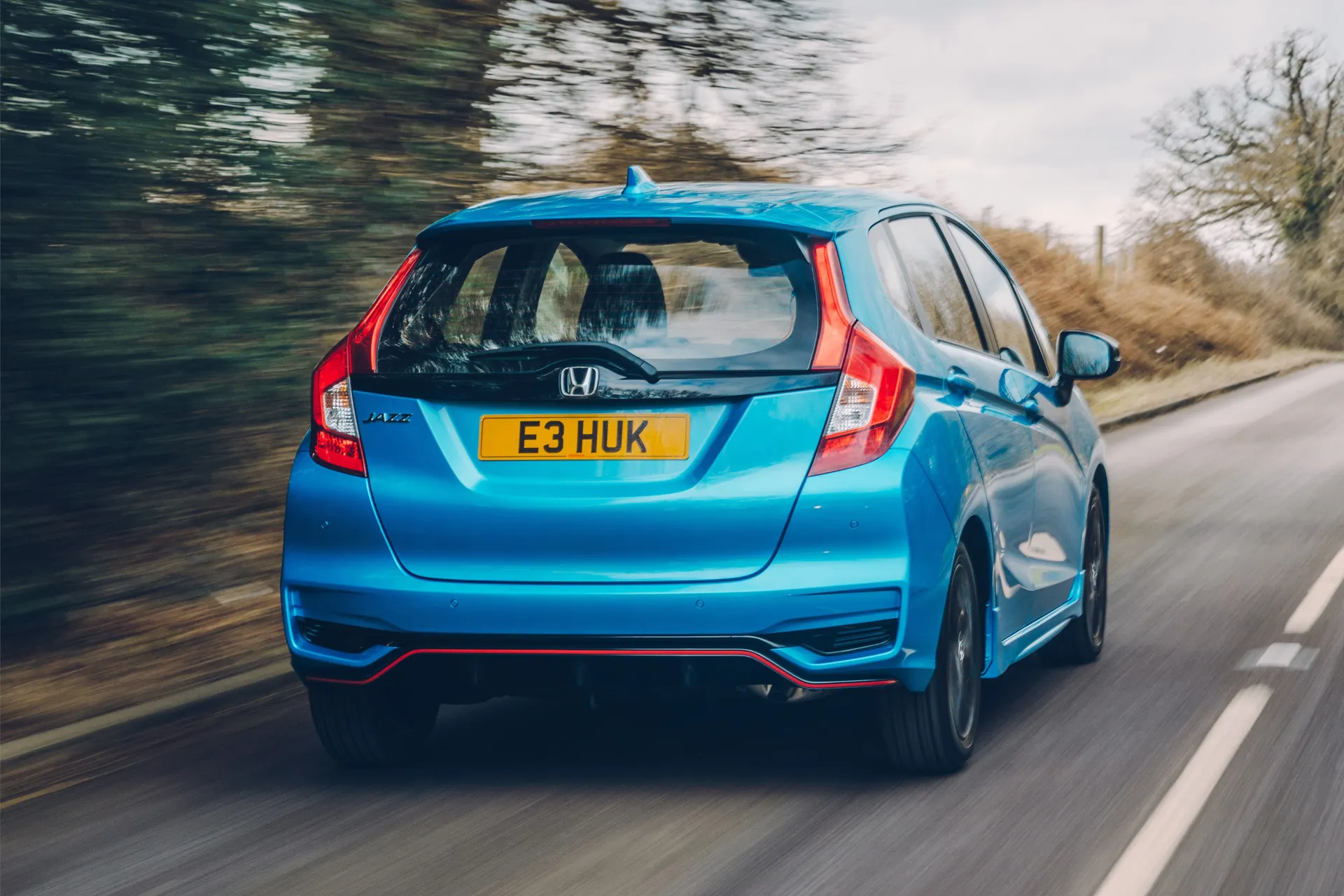
Previous generations of this car were known for riding with as much compliance as a skateboard, so we are happy to report that this model is much improved in this area. It'll still fidget over uneven surfaces, but deals with bigger bumps very nicely, absorbing the impact without losing too much body composure in the process.
Despite the tall sides and boxy proportions, the Jazz handles pretty well too. A Ford Fiesta will still show it a clean pair of heels on a windy B-road, but it grips nicely, tackling corners in a secure and predictable fashion.
There is a bit more body lean than you'll find in more conventional small cars. It's a slight difference though, and it won't float over compressions, so you avoid that unpleasant queazy feeling that overly-soft cars have.
On the motorway, it can be adversely affected by crosswinds, for instance when a lorry rumbles past, but for the most part it feels planted and stable. You can throw it into corners with some gusto and the Jazz proves to be surprisingly nimble, although the steering doesn't give you much sense of what the wheels are up to.
Honda Jazz Sport models feel a little firmer in town due to their 16-inch wheels, and you'll feel the odd thud on properly bumpy roads as the springs run out of travel, but there is no difference to the suspension setup underneath.
What engines and gearboxes are available in the Honda Jazz?
Forget that it produces over 100PS, because the 1.3-litre petrol Honda Jazz is rather slow. Almost all of its rivals use turbocharging to make them feel more flexible and responsive at low revs, but the little Honda goes without.
It's breathless, and feels weedy until you push the revs well above 4,500rpm. At that point it begins to kick into action, although it does get noisy. The standard six-speed manual gearbox has a really positive action, which is good because you'll be constantly working through the ratios trying to extract what little performance is available.
That's perhaps a little unfair, as in town you'll be able to nip in and out of traffic, bumbling along without being too fussed about the lack of oomph. On faster, flowing roads and the motorway though, it needs working hard.
If you don't want to change gear yourself (and many small car buyers don't) Honda offers the Jazz with what is known as a continuously variable automatic transmission (CVT). It doesn't have individual gears, and feels nothing like the latest dual-clutch autos. It rewards a gentle driver, and will get flustered and loud if rushed.
Choosing the CVT blunts the already weak performance, and it's also less economical. It'll suit buyers who want an auto fine, but we'd recommend picking the excellent manual instead, as it's cheaper and smoother.
The 1.5-litre petrol is better for buyers who are in a hurry. It's got a useful 30PS advantage over the standard car, and while its not the strongest in-gear, it's a willing performer, and a tad more relaxed at higher speeds.
Refinement and noise levels
The Honda Jazz is at its best when kept in its natural environment; scooting around town and urban centres. The wheezy 1.3-litre engine needs a lot of encouragement to get up to speed, and is very vocal when you work it.
As the speed rises, it becomes boomy, with the engine note reverberating around the cabin, and you'll hear more wind and road noise than you would in conventional rivals such as the Ford Fiesta and Volkswagen Polo. This limits how often you're likely to want to take it on motorway trips, as it's not a very relaxing travel companion.
On the plus side, the standard six-speed manual is precise and satisfying to use. The clutch is light and the shift is nice and positive, making the Jazz easy to drive smoothly. The CVT gearbox manages to keep things smooth as long as you stay below 40mph, but if you put your foot down it sends the revs soaring. It's also not related to your actual speed, so there's a lot of loud droning from the engine but it won't be travelling any quicker.
The 1.5-litre engine in the Honda Jazz Sport doesn't need working quite as hard, but it's no paragon of refinement. In fact, the Jazz just feels a bit tinny in general. You'll also hear stones pinging off the body over gravel, for example.
Safety equipment: How safe is the Honda Jazz?
All but entry-level Jazzes come with a comprehensive suite of safety systems to help prevent an accident, and even the most basic model has an auto-emergency braking system, six airbags, and hill-start assist.
This impressive roster means the Honda Jazz performed admirably in Euro NCAP's crash tests, receiving a full five stars when it was certified in 2015. It scored higher for adult protection than a Ford Fiesta or Citroen C3, and only the Renault Clio betters it in child protection ratings - in other words, it should keep you perfectly safe.
SE models and upwards come with a full suite of active systems that Honda calls its Advanced Driver Assist System (ADAS) for short. This snappily titled bundle packs in traffic sign recognition for reading the current speed limit, an intelligent speed limiter that will adapt to the local regulations. Every Jazz has a tyre repair kit.
It also includes lane departure warning and high beam support, which automatically dips your beams to stop you dazzling other drivers. You can't add this package to the most basic 'S' models though, another reason to pick a higher grade if you can afford it. Some drivers may find these systems more irritating than helpful.
The standard autonomous emergency braking (AEB) system can sense if you're about to have a collision, flashing up a visual and audio warning, and intervening by stopping the car if it thinks you're going to crash. It's great for preventing avoidable shunts, but unlike in rivals, it only works below 20mph, instead of 30mph.
MPG and fuel costs: How much does the Honda Jazz cost to run?
"With only one engine option, and that choice being an old-school non-turbo petrol, it’s not the most efficient small car. While an official figure of 48.7mpg sounds OK on paper, you have to work this engine quite hard to make progress, sapping fuel economy. That figure drops if you pick a higher trim level, or the CVT gearbox"
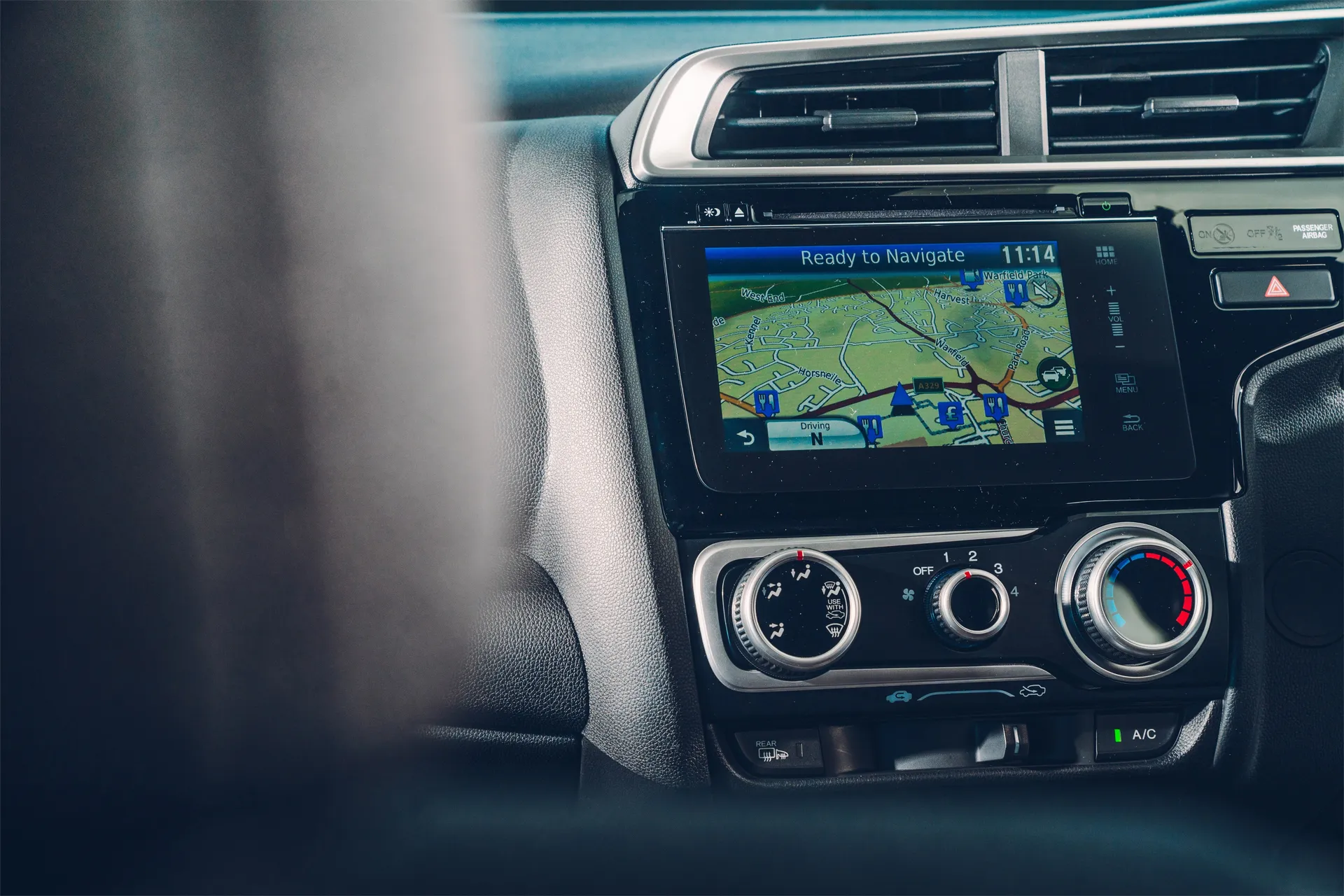
Our Real MPG owners averaged over 50mpg though, which goes to show a light right foot should translate to reasonable daily running costs, even if rivals offer some form of hybrid or electrification to cut their CO2.
The older 1.5 petrol has an official figure of 42.8mpg, again it should get close to that in mixed conditions.
With a 40-litre tank, you'll be able to eke out over 400 miles between fill ups, not bad for such a compact car.
How reliable is the Honda Jazz?
The Honda Jazz scored a remarkable 9.80 out of 10 for reliability in the HonestJohn.co.uk Satisfaction Survey, putting it in the top ten most reliable cars in the survey, which should put your mind at ease.
Honda as a brand may have only come 14th out of 30 manufacturers overall, but it was placed 8th out of all brands for reliability. It may not be a thrilling ownership prospect but sometimes boring is exactly what you want.
Insurance groups and costs
Weirdly, the Jazz finds itself in higher insurance brackets than other small family cars. It falls between Group 13 and 19 depending on the engine and trim, instead of starting at below ten like the majority of superminis.
Unlike some cars, the rating doesn't change as you go up the trim levels. All the models with the 1.3 engine (both manual and automatic) will be the most affordable choice for young drivers, or buyers with a few points.
The rarer Jazz Sport with the 1.5-litre petrol is in Group 19, making it quite pricey compared with say, the Kia Rio GT-Line with a 120PS engine. That sits all the way down in Group 9, and most rivals will be cheaper.
VED car tax: What is the annual road tax on a Honda Jazz?
Taxing your Honda Jazz is very simple. Cars registered before April 2017 will cost you less than £30 a year, since every model emits less than 120g/km of CO2, at least according to the older NEDC-style efficiency tests.
Newer models have to pay the standard flat-rate of road tax (VED) that applies to all petrol and diesel cars. Currently this will set you back £165 a year, but there are no extra charges, as faced by some pricier models.
Although not a popular choice with company car buyers, the manual 'S' model will cost you the least. Its 29% BIK bracket is still quite a lot higher than for example, the electric Honda e, but still only about £70 a month
How much should you be paying for a used Honda Jazz?
"The Jazz makes for a fantastic second hand car, since it has an enviable reputation for exceptional reliability. Prices for a 2015 car start below £6000 but these will likely have higher mileages."
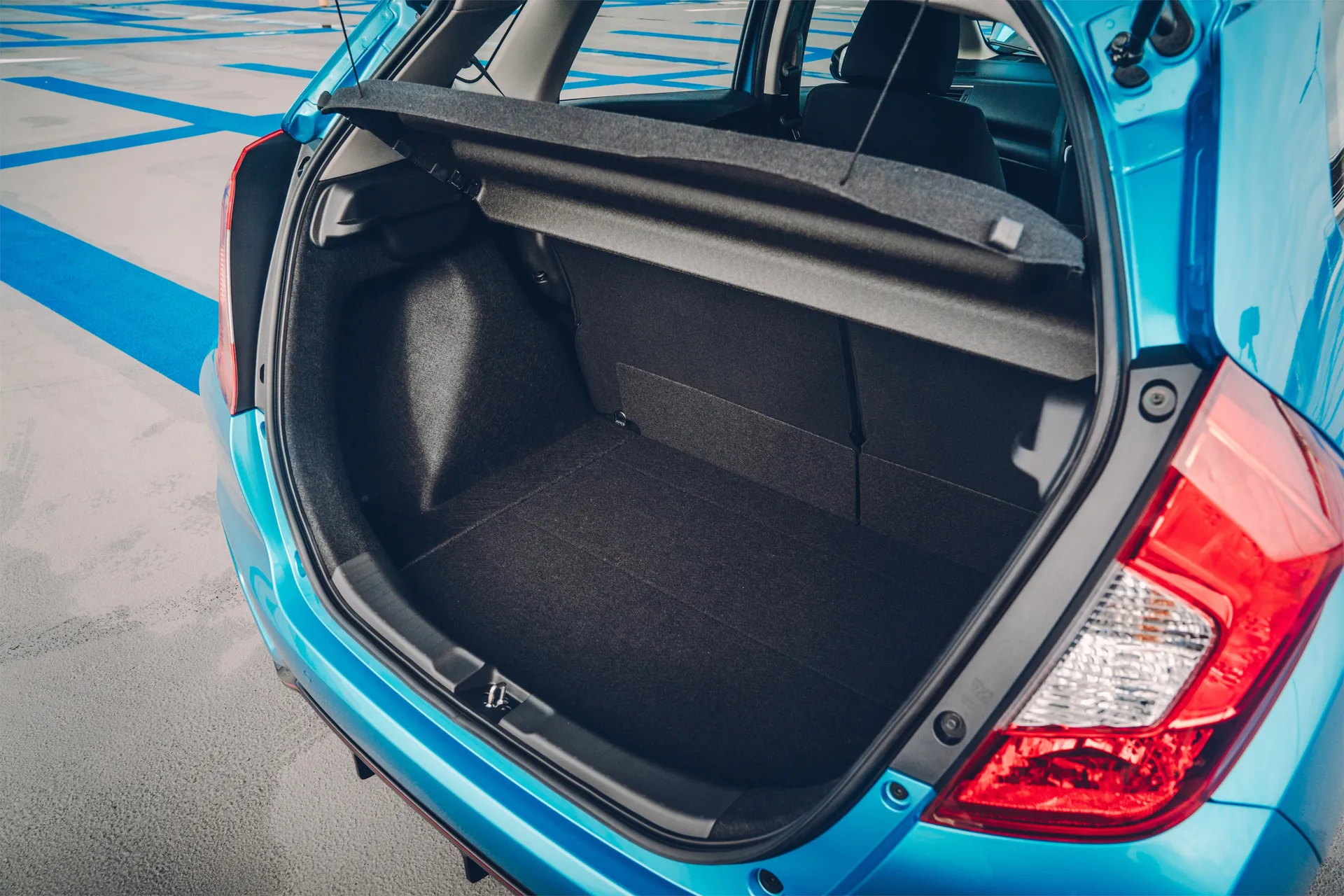
Up the ante to between £7000 and £10,000 and you'll find plenty of lower mileage models, one previous owner, and a full main dealer service history. You'll have a choice of trim levels too, go for an SE or EX Navi.
Searching for a used model also means you can track down the (slightly) quicker 1.5-litre Sport model. This is the best Jazz for motorway journeys, but it was launched in 2018, so commands a higher price premium. Expect to part with around £12,000 of your hard earned cash to secure one with about 10,000 miles on the clock.
Trim levels and standard equipment
High spec versions of the Honda Jazz are very popular, and after a quick glance at the equipment list for the basic models, it's not hard to see why. The entry-level Honda Jazz S is an exercise in abstinence, and while vital features like air-conditioning, electric windows, and cruise control are all here, the standard CD radio is laughably dated.
Most buyers should seek out the Honda Jazz SE instead. It adds 15-inch alloy wheels, parking sensors and a 7.0-inch infotainment touchscreen that comes with DAB digital radio, and the option to add sat-nav should you wish.
Only the top Honda Jazz EX grade comes with niceties like a leather steering wheel and dual-zone climate control, and it has equipment you'll find in most mid-spec rivals, including LED lights, keyless entry and a parking camera.
The limited run Honda Jazz Sport specification gets a suitably subtle body kit, 16-inch gloss black alloys, tailgate spoiler, and on the inside, pin-stripe seat fabric, plus racy orange stitching on the steering wheel and gear stick.
There is virtually no optional equipment, but there was an option to add Garmin sat-nav for £610. Honda offered some packs, but when the ambitiously named Premium Pack includes floor mats and mud guards, they're hardly worth it.
Ask the heycar experts: common questions
Is the Honda Jazz a reliable car?
What are the faults with the Honda Jazz?
Is the Honda Jazz being discontinued?
Get our latest advice, news and offers
Keep me updated by email with the latest advice, news and offers from heycar.
By submitting you agree to our privacy policy
